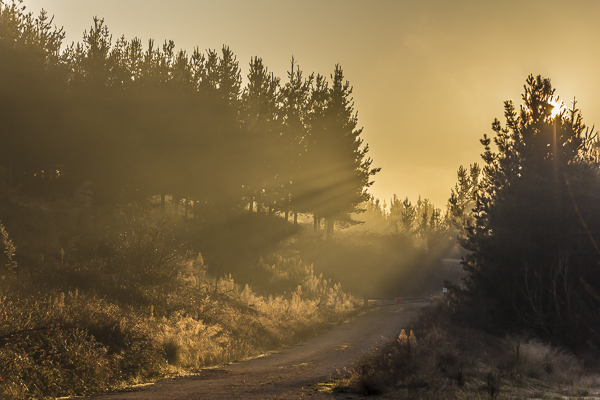Training for any long walk, including the Camino de Santiago, an ancient pilgrimage route across northern Spain, requires some preparation, both physical and mental.
Physical preparation – walking with backpacks
Firstly, physical preparation must include walking on paths analogous to the kinds of track we expect to encounter, with distance and hills and varying terrain. And as departure time approaches it is important to get used to walking with poles – remember a million step walk over 800km (500 miles) requires you to lift those poles a million times. The poles feel light, but you need to build those muscles. And of course, it is vital to practice with packs loaded with everything you intend to carry. Here is a typical day on the track. We are currently covering around 10-12kms (6.2 – 7.5 miles) a day training with packs.
Becoming aware of the bigger picture – taking note of your surroundings
Walking frees the mind and de-stresses the body. The body establishes a natural rhythm and if you keep your eyes open you will see connections that show how the landscape shapes a society, or you will encounter and take note of those services required to maintain a modern society the way the components of a complex organism interact to sustain life all around us. Or maybe I’m just over-thinking it…
Acceptance of setbacks
Life is full of setbacks – some minor, some major – and these serve to make us pause and consider alternative solutions to our problems. It is part of the creative process that enriches our lives. Setbacks can be in our career, our relationships, or losing that fiddly little piece that sprung out of your glasses frame. Whatever it is, there is an analogue in finding a physical barrier to our habitual training route. This time after walking for 4km only to have to turn back and find another route before breakfast.
Making friends with the locals
No matter how isolated your training path may be, no matter how isolated you feel, there are always unexpected encounters. As the saying goes, “there are no strangers, just friends you haven’t met yet”. We are often accompanied on our training walks by a whole range of such friends – be they people out for a ride on a mountain bike, or fellow walkers enjoying the fresh air and bucolic ambience. But quite often there are no people at all – just the local kangaroos or foxes or cockatoos bemused at our antics.
It will be interesting to see how well our training has prepared us for the road ahead. And let me know in the comments about your insights into preparing for a long trek.
You can have these posts delivered to your in-box by entering your email address and clicking the ‘subscribe button to your left, then respond to the confirmation email in your in-box 🙂


Totally agree with training before the Camino with both backpack and poles. I’m so glad I did. However nothing prepared me for the mountains and rugged terrain. How that escaped my notice I do not know…but nevertheless I endured and overcame. In fact it is a source of great pride that I actually managed to climb with the backpack. Probably because I didn’t know, I didn’t worry too much about it and just did it. The rewards were tremendous. I often wonder about those folks who post to say they’ve done very little training, haven’t yet worn their shoes…etc etc. I wonder how they get on? I know that mentally I was in a very good place for the walk and that carried me through the tough times, despite being quite fit by the time I left.
Jerry,
Good call about practicing to walk with poles BEFORE the Camino!! I broke mine in that first day and it took a while to get the rhythm sorted out. I think by the third day I looked like I knew how to work them!
Kristine
Thanks Kristine – yes it definitely pays to practice with the poles – a million times is a lot of lifting those poles so it’s well worth getting to know them and how to make them work for you before the camino! 🙂
Definately overthinking it 🙂 Trying to train in similar surroundings is good but not always possible. The best thing is that you are training and increasing endurance. I’ve trekked around Nepal and there is nothing in Oz that can prepare you for that other than trek trek trek. Have never used poles for any of my long walks – but each to his/her own. I have used a monopod but soon found it was easier to carry than use as a pole. Good luck and wishing you both a wonderful experience. On on 🙂
Thanks Wally – yes I prefer to use poles as they’re a great stabiliser and they do take some of the mechanical load off the legs – but as you say – to each their own on that 🙂
I don’t think you’re overthinking the connection between our selves and nature or society. In fact, it appears that walking clears the mind of clutter and allows those thoughts and connections to surface. What lovely sights and sounds you are encountering, not to mention becoming attuned to your own bodies. I’m looking forward to my armchair view of your upcoming trek!
Thanks Cathy – I agree that walking is great for clearing the mind of clutter and it certainly does free us to consider the bigger picture – which after all is what a pilgrimage walk is all about in my view 🙂
🙂 Great stuff Jerry!
Thanks Jules! I’m glad you enjoyed it 😀